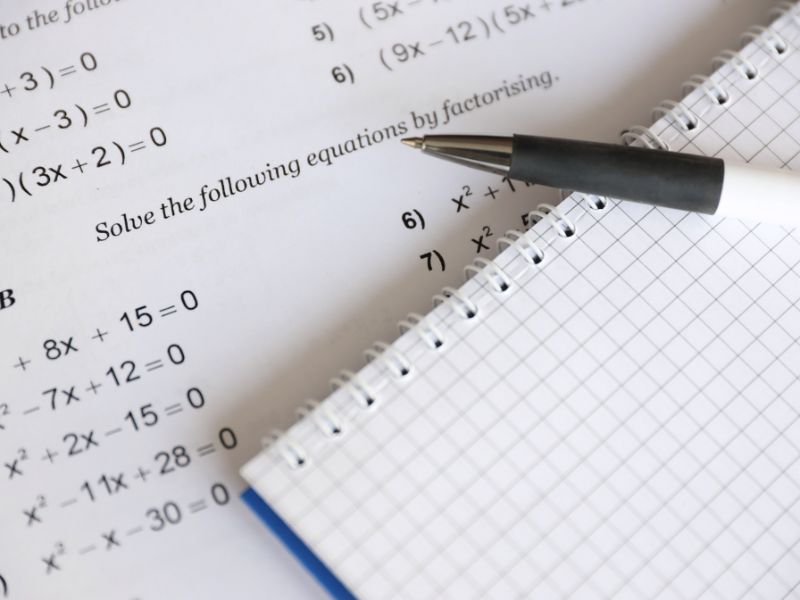
Understanding the Types of Problems
The No Calculator section can toss up various challenges. You might decipher word problems, set up equations, or navigate geometric puzzles. For instance, word problems could involve a real-world scenario requiring algebra to solve. Geometry requires the application of the Pythagorean theorem or concepts about angles. Each problem type is a different beast, but they can all be tamed with the right approach.
Strategy 1:
Understanding the Problem
Your first step is to grasp what the problem is asking. It's like a conversation - you must understand the question before responding. Read the problem carefully. What are the unknowns? What information is given? For example, in a word problem, you might be given the speed of a car and asked to find the distance it travels in a specific time. The distance is the unknown, while the speed and time are the knowns.
Strategy 2:
Formulating a Plan
Formulating a plan is a critical juncture in problem-solving. It's like sketching a map before embarking on a journey. You know where you're starting from (the given information) and where you need to go (the unknowns). Now, you need to decide the route.
Think about the mathematical tools at your disposal. They could be formulas, theorems, or principles. Each problem might require a unique combination of these tools. For example, an algebraic problem might involve the distributive property and the principles of solving equations, while a geometry problem might require the Pythagorean theorem or the properties of triangles. Once you have identified the right tools, consider the order to apply them. Some problems may require several steps to reach the solution, and figuring out the correct order can make the process much more efficient.
Let's go back to our car example. The problem has given us the speed and time and asked us for the distance. We identify the formula distance = speed x time as our tool. This formula acts as our route from the knowns (speed and time) to the unknown (distance).
Strategy 3:
Implementing the Plan
Once you've formulated your plan, it's time to implement it. This step involves precise calculations, careful manipulation of equations, and diligent application of formulas or principles. Remember, accuracy is just as important as speed. Take your time to ensure you're performing each step correctly. Keep track of your unknowns, and be careful with negative signs and fractional values. In the car problem, implementing the plan means applying the formula distance = speed x time. We multiply the given speed and time values, ensuring to carry out the multiplication correctly to find the distance.
Strategy 4:
Checking Your Work
Ok. So you've worked out a solution, but your job isn't done yet. Checking your work is an important habit to develop. This step is about confirming that your answer is reasonable and that you haven't made any errors.
Start by making sure your answer makes sense in the context of the problem. If the calculated distance in our car problem is 500 miles and the time was 2 hours, but the speed was given as 60 miles per hour, there's a mistake. The distance should be less than the product of the speed and time.Next, quickly review the steps you took to solve the problem. Did you apply the correct formulas or principles? Did you perform all calculations correctly? Sometimes, you'll spot a mistake in your process that led to an incorrect answer.Checking your work helps you avoid mistakes and builds your confidence in your problem-solving skills. By confirming that your process and answer are correct, you can confidently move on to the next problem.
These expanded strategies offer a deeper understanding of the problem-solving process. Remember, the key to success in the No Calculator section – and in math in general – is to understand the problem, develop a plan, carry out that plan, and then check your work. With practice, these steps will become second nature.
Practice and Preparation
All this strategizing won't turn into success overnight. Consistent practice is critical. Tackle a variety of problems. Review your mistakes. Over time, you'll notice patterns, get faster, and become more accurate. Practice tests and math textbooks can be great resources to start with, alternatively, working with a SAT Tutor will ensure that all these strategies and more are ingrained into your SAT test prep behavior.
Conclusion
Navigating the No Calculator section of the SAT Math Test is a journey where each problem is a step forward. Remember, understanding the problem, formulating a plan, implementing it, and checking your work are your trusty companions in this journey. As you practice and prepare, these companions will become your second nature, smoothing the journey. You've got this!
